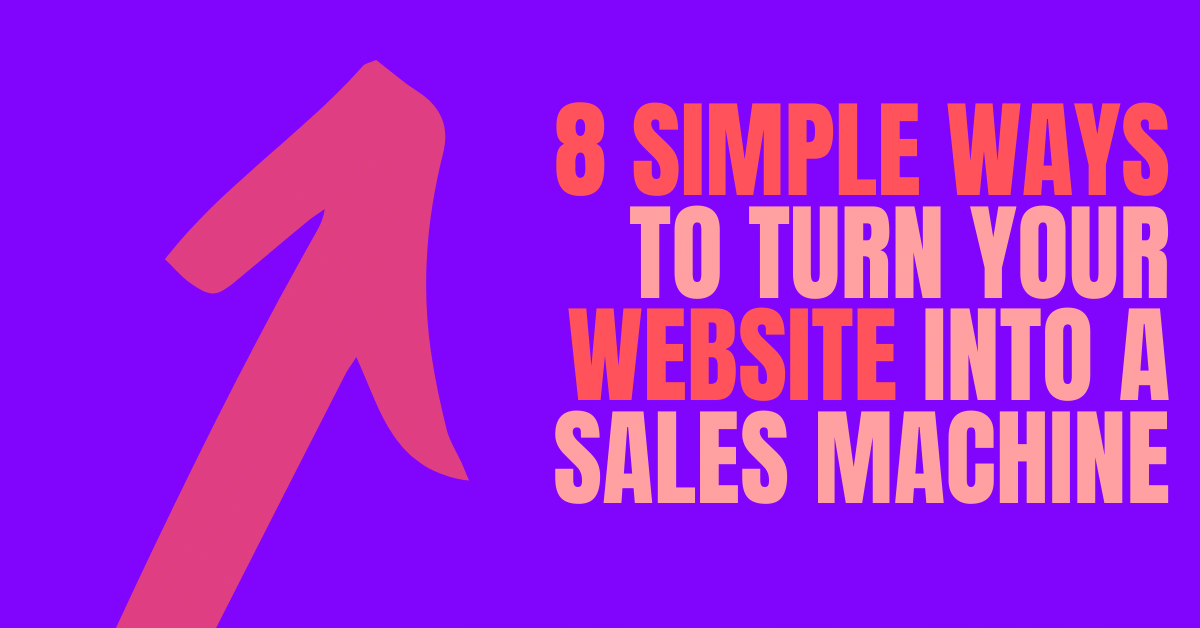Several years ago, I discovered an eyeglass company named Warby Parker.
Their free home trial grabbed my attention.
It was a simple process. I visited their website and chose my five favorite frames. In a couple of days, the boxed package arrived at my door — for free.
I tried them on and asked family members their preference.
After settling on the chosen style, I returned the box (free postage) and placed my order online. They filled my prescription and zipped the new specs to me a few days later.
Fast and convenient.
What turned me into a customer?
The online experience.
Warby Parker's secret weapon is their website. It’s optimized for transforming prospects into paying customers.
And apparently it’s working like gangbusters.
In the last few years, the company’s revenue has rocketed to nearly a $2 billion valuation. They’ve also added 112 brick-and-mortar stores.
So what makes their website work so well?
Simple design
Clear headline
Easy to find call-to-action button
An interactive quiz
Location finder for their physical stores
Their website does the heavy lifting. And it hums like a freshly oiled machine.
Now think about your website: is it working for you — or is it only a virtual business card taking up gigabytes?
“Think about your website: is it working for you — or is it only a virtual business card taking up gigabytes?”
A properly designed site serves as your 24/7 company salesperson.
Your website’s ultimate goal isn’t to look new, fresh, and modern — it’s turning prospects into customers.
Ready to look at your site with fresh eyes?
Here are 8 simple ways to transform your website into a sales machine:
#1
Drive leads to your site
Building a fancy website doesn’t guarantee traffic. If only it were that easy.
You must get people's attention. How else do they know you’re there?
There are two key ways to increase your traffic:
1) Organic
2) Paid
ORGANIC
Organic traffic = traffic generated by unpaid means.
Organic happens when your site appears in the search engine results for a specific topic or industry.
Some of the best ways to increase organic traffic is to publish a new blog or post on social media.
PAID
Paid traffic = traffic generated by paid ads.
Paid traffic is pay-per-click (PPC) ads or traditional media.
PPC includes ads on Google, YouTube, Facebook, Instagram, Pinterest, and LinkedIn. Traditional media (TV, radio, print, outdoor) is also an effective tool for some.
Traffic doesn’t happen magically.
Business owners often think, “If I build it, they will come.”
No. You must invite them.
#2
Know your target market
Your site design must have your target market in mind.
Avoid “let’s-reach-the-whole-world” thinking. Blanketing multiple mediums with a generalized message doesn’t work for small businesses.
If you’re Apple, Facebook, or Budweiser maybe the rules can be bent. But not for the majority of businesses.
Get as specific as possible.
Think niche — a slice of the pie, not the whole pie.
Yes, it sounds counterintuitive but it works.
Something amazing happens when you speak your target market’s insider language: they’ll trust you
When someone trusts you, they’re willing to do business with you.
Identifying and “getting in the head” of your target market takes time. But here are key questions that can speed up the process:
What’s their gender?
Where do they live?
Children? How many?
Are they married or single?
Are they highly educated?
What’s important to them?
How do they use their spare time?
What's their favorite music?
Favorite social media platforms?
Favorite blogs? TV channels? Radio stations? Magazines?
What stores do they shop?
Introverted or extroverted?
Conservative or liberal?
What kind of belief system?
What's a typical day like?
What makes them angry?
What makes them laugh?
Once you identify those answers, focus on their unique buying journey:
What do they want?
What are their problems?
How can you help them?
What's your plan to help them?
What do you promise them?
What should they do first?
What's the happy ending?
There are no shortcuts with this process.
But the hard work pays off.
Take a deep breath and roll up your sleeves. Work to understand your target market.
You’ll reap substantial rewards.
#3:
Keep your website simple
Simple is easier said than done. Websites quickly clutter with reams of unimportant information and pictures.
The result is an overwhelmed — and often confused — reader.
People aren’t looking for textbooks. They’re looking for answers to a problem. They want a company to understand their needs and point them to a happy ending.
A few ideas for simplicity:
Use high-impact pictures instead of carousels/slideshows
Multiple moving pictures are irritating and slow down your site.
Offer clear menu navigation
Go for fewer buttons at the top of your site. Focus on the absolute necessities. If you need more buttons, consider placing them at the bottom of the page.
Avoid overwhelming with too much copy
People don’t read websites they scan them.
Speak to your target market's pain points in the main headline
Avoid being clever with your headline. Instead, make it effective. Create your headline by completing the sentence, “We help you _____.”
Use the pronoun “you” more than “we” or “us”
This keeps the focus on the customer rather than you. They’re the hero of the story, you’re simply their guide.
Simple, intuitive websites gain customers. Confusing and cluttered sites lose them.
#4:
Give easy action steps
Think about visiting someone’s home for the first time. You can’t find the bathroom or their kitchen trash can.
What’s obvious to the homeowners is foreign to you.
The same experience happens with a first-time website visitor. You’ve looked at your site a thousand times, but they’re seeing it with fresh eyes.
In a matter of seconds, they’re trying to figure out three things:
1) What you do
2) How your offer helps them
3) How they can get it
The longer it takes to answer those questions, the less likely they'll become a customer.
The best websites have clear direction markers. Your job is figuring out the process and simplifying it for them.
You can do this in a variety of ways:
Show visual 1-2-3 action steps
People gravitate to images more than words.
Utilize multiple call-to-action buttons
Tell them to “Sign Up” or “Schedule an Appt” or “Download PDF” or “Buy Now.”
Use a pop-up button before someone leaves your page
When properly done, it can redirect to a discount, promotion, or lead magnet.
#5:
Promote a lead magnet
A lead magnet offers something for free in exchange for contact information.
Collecting email addresses is mission-critical. In today’s world, when someone shares their email, it’s like they’re handing you a gold bar.
What’s so great about an email? Someone's granting you permission to contact them. Most importantly, it shows their interest.
Hello, hot lead.
One retail store in our city estimated each collected email generated roughly $1,400 in return. Those numbers obviously vary according to industry, but the same principle applies: you must have contact info to stay in touch with potential customers.
Don’t overthink your lead magnet. It’s simply providing answers to your target market's questions.
Lead magnets can take a variety of forms:
eBook
Case Study
Video Tutorial
Checklist
Cheat Sheet
Template
Swipe File
Tool Kit
Resource List
Workbook
Spreadsheet
Infographic
If your website visitor sees value in what you’re offering, they’ll happily give you their email address.
And the transaction becomes a Win/Win.
When collecting contact information, make your form short. Focus on their name and email address. The more info you try and collect, the less likely you’ll get anything.
Of course, there are exceptions (especially for higher-ticketed purchases). But when you keep things simple, you’ll be rewarded with a growing database.
#6:
Amplify your authority
People are not always ready to buy immediately. They need time for research.
That’s why offering your expertise is critical. When you showcase your industry knowledge, people feel confident doing business with you.
There are numerous ways to amplify your authority:
Livestream / Webinar
Blog / White papers
Podcast
Vlog / Video tutorials
Email marketing
You don’t need to do them all, but pick at least one.
LIVESTREAM
A livestream generates instant attention.
Using a social media platform like Facebook, you can reach your audience in real-time.
Speak on a topic that interests your target market. Give practical info and share industry secrets.
The more knowledge you drop, the more they’ll want to work with you.
Some people get dismayed when they only have a few watching. But remember, most viewers will watch after the event. That’s when they'll see it on your timeline or featured in your other marketing collateral.
So don’t worry about the live numbers — let the video work for you in the days and weeks afterward.
BLOG
A blog refreshes your website with new content.
When you focus on answering your target market’s questions, you’ll see an immediate benefit.
New blog entries also give you a perfect excuse to email your database. Highlight your article and provide a link. When they visit your blog, make sure there’s a tempting call-to-action waiting for them somewhere on the page.
And here’s a bonus: helpful blog entries tend to do well on search engines.
PODCAST
I know what some of you are thinking, “I hate writing! And I don’t have the time.”
Ok, no problem. If you’re not a writer, buy a microphone and talk into it.
Podcast listener numbers are increasing across the United States. It also showcases your personality in ways that written words cannot.
When you share must-have info, people will find you and listen.
Offer a podcast tackling key industry issues. Interview influencers, talk about case studies, and review products.
Think about it as your own radio show.
VLOG / VIDEO TUTORIALS
Videos are essential for your brand.
Many people prefer to watch videos rather than read.
And you don’t need tons of expensive equipment to get started. Just use your smartphone.
It might take a little practice to get comfortable in front of a camera, but stick with it and your videos will add a splash of pizzaz to a stodgy website.
There are also affordable editing apps to give your video a professional look.
Email marketing is the little engine that could.
It’s easy to think of email as an archaic tool, but it continues to work today. When done correctly it builds brands, both large and small.
And it’s one of the most cost-effective ways to reach your audience.
Email is often more reliable than social media. Social media platforms can alter algorithms and change the rules of how you can reach followers.
But your email database belongs to you.
Nourish it like a garden. Reach out regularly to the people behind those emails. Educate, entertain, and lead readers to your resources.
It will deliver.
#7:
Make payment easy
It’s amazing how many businesses still require people to pay in person, by mail, or over the phone.
When you offer online payments, customers love the convenience.
Online payments also bring more traffic on your site. And that means more eyeballs seeing your offers.
With recent technology advances, adding e-commerce capabilities has become easy and streamlined. Even small companies can take advantage.
The key priority is persuading someone to purchase something on your site.
There are several ways to do this, including:
Tier pricing
Flash sales
Promotion codes
Online discounts
Countdown timers with expiring specials
It’s a beautiful thing when you get an email notifying you of an online purchase.
That’s your website working for you.
#8:
Social proofing
This one doesn’t sound as sexy as the others, but it's one of the greatest things you can do:
Place testimonials on your website.
When people are unsure whether to purchase, a testimonial can sway them to the cash register.
Reviews, endorsements, and recommendations are powerful sales tools.
That’s why it’s called social proofing. When people see others approving your product/service, they feel safe purchasing from you.
Ask customers for their feedback. Offer a $5 coffee gift card if they leave a review.
You can never have too many testimonials. And when you sprinkle them throughout your website, it’s like magic dust.
Want to dig a little deeper into small business marketing? Download our free PDF.
About Me
Hey, I’m Brian, co-founder of Genie Jar Digital. Born a Tar Heel but now a Virginian, I’m the father of five teenagers and the husband of one amazing lady. My family has a thing for Golden Retrievers. Given the right circumstances, I can do a mean moonwalk on a slick kitchen floor.























